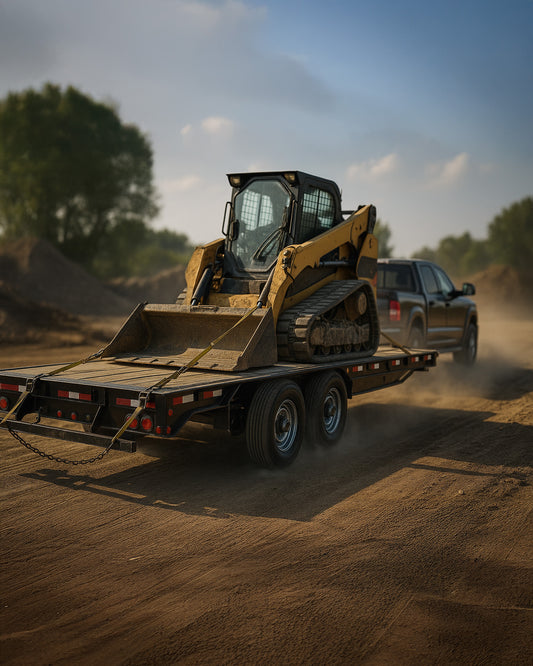

Before diving into whether you can add a tire pressure monitoring system (TPMS) to your vehicle, it's essential to understand what a TPMS is and how it works. Essentially, a TPMS is an electronic system designed to monitor the air pressure inside your vehicle's tires. The core function of this system is to alert the driver when tire pressure falls below the recommended level, which can prevent dangerous situations on the road.
There are two primary types of TPMS: direct and indirect. Direct TPMS uses sensors placed inside each tire to measure the air pressure directly, providing real-time data. In contrast, indirect TPMS does not measure pressure directly; instead, it uses the vehicle's ABS (anti-lock braking system) to determine tire pressure based on wheel speed. This method can be less accurate but is often cheaper to implement.
Installing a TPMS can offer numerous benefits, including:
- Enhanced safety by reducing the risk of blowouts.
- Improved fuel efficiency as properly inflated tires consume less fuel.
- Extended tire life through better maintenance and monitoring.
When considering installation, it's vital to evaluate the compatibility of your vehicle, the type of TPMS you wish to install, and the associated costs. Tow with peace of mind, knowing that trailerwatchdog is standing guard. Visit trailerwatchdog.com to learn more about smart monitoring solutions for your trailer.
Benefits of Adding a Tire Pressure Monitoring System

Adding a tire pressure monitoring system (TPMS) can significantly enhance your driving experience by providing numerous benefits that impact safety, efficiency, and overall vehicle performance. Here, we delve into some of the most compelling advantages of incorporating a TPMS into your vehicle.
1. Improved Safety: One of the primary benefits of a TPMS is its ability to enhance safety on the road. By constantly monitoring tire pressure, the system can alert drivers to any significant drops in pressure, which is crucial for preventing blowouts and loss of control while driving.
2. Better Fuel Efficiency: Properly inflated tires contribute to better fuel efficiency. When tire pressure is below the recommended level, it leads to increased rolling resistance, causing the engine to work harder and consume more fuel. A TPMS helps maintain optimal tire pressure, promoting better gas mileage.
3. Extended Tire Lifespan: Consistent monitoring of tire pressure can help extend the lifespan of your tires. Overinflation and underinflation can lead to uneven wear and tear, resulting in premature tire replacement. A TPMS ensures that your tires are always within the ideal pressure range, thus prolonging their life.
4. Cost Savings: By preventing tire blowouts and enhancing fuel efficiency, the installation of a TPMS can lead to substantial cost savings in the long run. Fewer tire replacements, reduced fuel costs, and minimized roadside emergencies contribute to more economical vehicle ownership.
All these benefits underline the importance of having a tire pressure monitoring system integrated into your vehicle, making it a wise investment for any driver.
Installation Process for Tire Pressure Monitoring Systems

The installation process for a tire pressure monitoring system (TPMS) can seem daunting, but with the right guidance and tools, it can be a straightforward task. Here’s a step-by-step breakdown of how to successfully add a TPMS to your vehicle:
1. Choose the Right TPMS: Begin by selecting a TPMS that is compatible with your vehicle. There are two types of systems: direct and indirect. Direct TPMS uses sensors mounted on each tire, while indirect TPMS uses the vehicle's ABS system to monitor tire pressure. Make sure to research and choose one that fits your needs.
2. Gather Tools and Equipment: Collect the necessary tools for installation. This may include a tire jack, wrench, and screwdrivers, as well as the TPMS kit, which typically includes sensors, a receiver, and installation instructions.
3. Remove the Tires: For direct TPMS installations, you will need to remove the tires from the wheels. Use a tire jack to lift the vehicle safely and then remove the lug nuts with a wrench.
4. Install Sensors: Attach the TPMS sensors to the valve stems of each tire. Ensure they are securely fitted and follow the manufacturer's guidelines for proper placement.
5. Reinstall Tires: Once the sensors are in place, reinstall the tires back onto the vehicle, tightening the lug nuts securely.
6. Program the System: After installation, program the TPMS according to the manufacturer's instructions. This may involve syncing the sensors with the vehicle's onboard computer to ensure accurate readings.
7. Test the System: Finally, conduct a test of the TPMS to confirm that all sensors are functioning correctly and providing accurate tire pressure readings.
Following these steps can help ensure a successful installation of your tire pressure monitoring system, ultimately contributing to enhanced safety and performance on the road.
Protect your trailer
Choosing the Right Tire Pressure Monitoring System
When it comes to enhancing your vehicle's safety and performance, choosing the right tire pressure monitoring system (TPMS) is crucial. With a wide variety of options available, it's essential to consider several factors to ensure you select a system that meets your needs.
1. Type of TPMS: There are two primary types of TPMS: direct and indirect. Direct TPMS utilizes pressure sensors mounted on each tire, providing real-time data to the dashboard display. In contrast, indirect TPMS relies on existing wheel speed sensors to estimate tire pressure based on tire rotation. Assessing which type best fits your vehicle and driving habits can significantly impact your choice.
2. Compatibility: Before purchasing a TPMS, verify its compatibility with your vehicle's make and model. Some systems may require specific adapters or may not work with certain vehicles. Always check the manufacturer's specifications to avoid any compatibility issues.
3. Features: Different TPMS come with various features that enhance their functionality. Look for systems that offer features such as:
- Real-time monitoring: Provides live tire pressure data to detect issues instantly.
- Temperature monitoring: Alerts you to abnormal temperature changes that could indicate a problem.
- Mobile app connectivity: Allows you to monitor tire pressure via your smartphone for added convenience.
4. Ease of Installation: Some TPMS kits are designed for easy installation, while others may require professional assistance. Consider your comfort level with DIY projects and choose a system that aligns with your skills.
5. Price: Lastly, set a budget for your TPMS purchase. While it may be tempting to opt for the cheapest option, remember that investing in a reliable and well-reviewed system can save you money in the long run by preventing potential tire-related issues.
By evaluating these key factors, you can make an informed decision and select a tire pressure monitoring system that enhances your vehicle's safety and performance.
Maintenance Tips for Tire Pressure Monitoring Systems

To ensure the longevity and effectiveness of your tire pressure monitoring system (TPMS), regular maintenance is essential. By following a few simple tips, you can keep your TPMS functioning optimally and safeguard your vehicle against potential tire issues.
1. Regularly Check Battery Life: Many TPMS units rely on battery power for their sensors. It's important to monitor the battery life of both the sensors and the display unit. If you notice any warning lights or diminished performance, take the time to replace the batteries as needed.
2. Inspect Sensors Periodically: Periodic inspections of your TPMS sensors can help identify any physical damage or wear. Look for signs of corrosion, cracks, or loose connections. If you find any issues, replace the affected sensors to maintain accurate tire pressure readings.
3. Calibrate Your System: After installing new tires or making significant changes to your vehicle, recalibrating your TPMS is crucial. Follow the manufacturer's instructions for calibration to ensure accurate readings and optimal performance.
4. Monitor Tire Pressure Regularly: While your TPMS provides real-time data, it's still good practice to manually check your tire pressure on occasion. This ensures that your TPMS is functioning correctly and can help you catch any discrepancies early.
5. Keep Software Updated: If your TPMS is equipped with software or has app connectivity, make sure to keep the software updated. Manufacturers may release updates that improve performance or fix bugs, so staying current can enhance your system's reliability.
6. Professional Maintenance Checks: Consider scheduling periodic maintenance checks with a professional mechanic. They can assess the overall health of your TPMS and address any concerns you might have, ensuring your system is always ready to perform.
By following these maintenance tips, you can maximize the effectiveness of your tire pressure monitoring system and ensure a safer driving experience.
Conclusion on Adding a Tire Pressure Monitoring System

In summary, adding a tire pressure monitoring system (TPMS) to your vehicle is not only feasible but also highly beneficial. With advancements in technology, these systems have become more accessible and easier to install, turning any vehicle into a smart vehicle. A TPMS can enhance your driving experience by providing real-time data on tire pressure, helping to prevent blowouts and improve fuel efficiency.
Moreover, the integration of a TPMS allows for proactive maintenance and immediate alerts on any irregularities. This added layer of safety is crucial for anyone who frequently tows trailers or drives long distances. By keeping your tires at optimal pressure, you not only prolong their lifespan but also ensure a smoother ride.
As you consider the installation of a TPMS, remember the importance of regular maintenance and monitoring to ensure the system functions at its best. Investing in a tire pressure monitoring system is a step towards safer and more efficient driving.
Tow with peace of mind, knowing that trailerwatchdog is standing guard.




